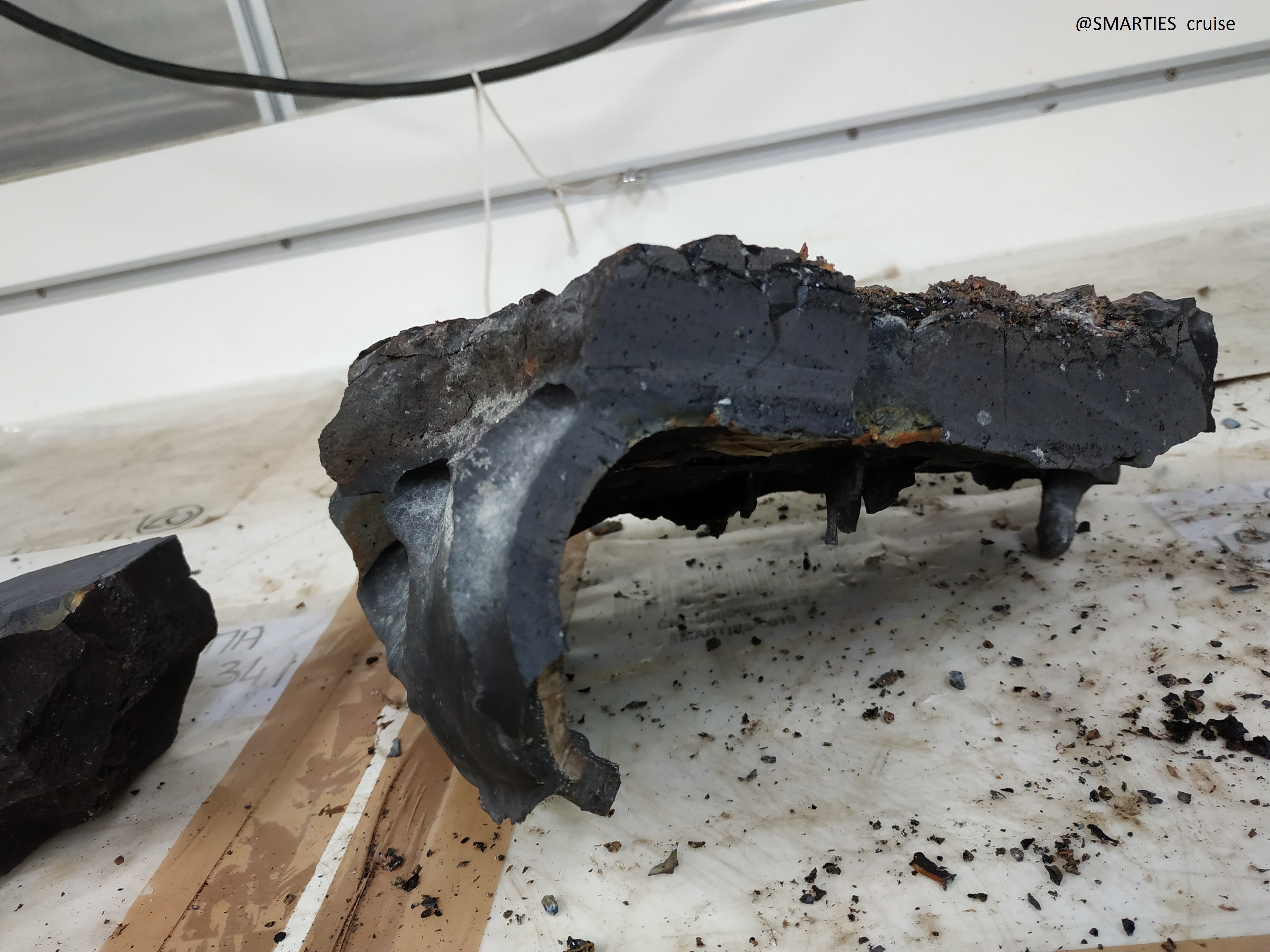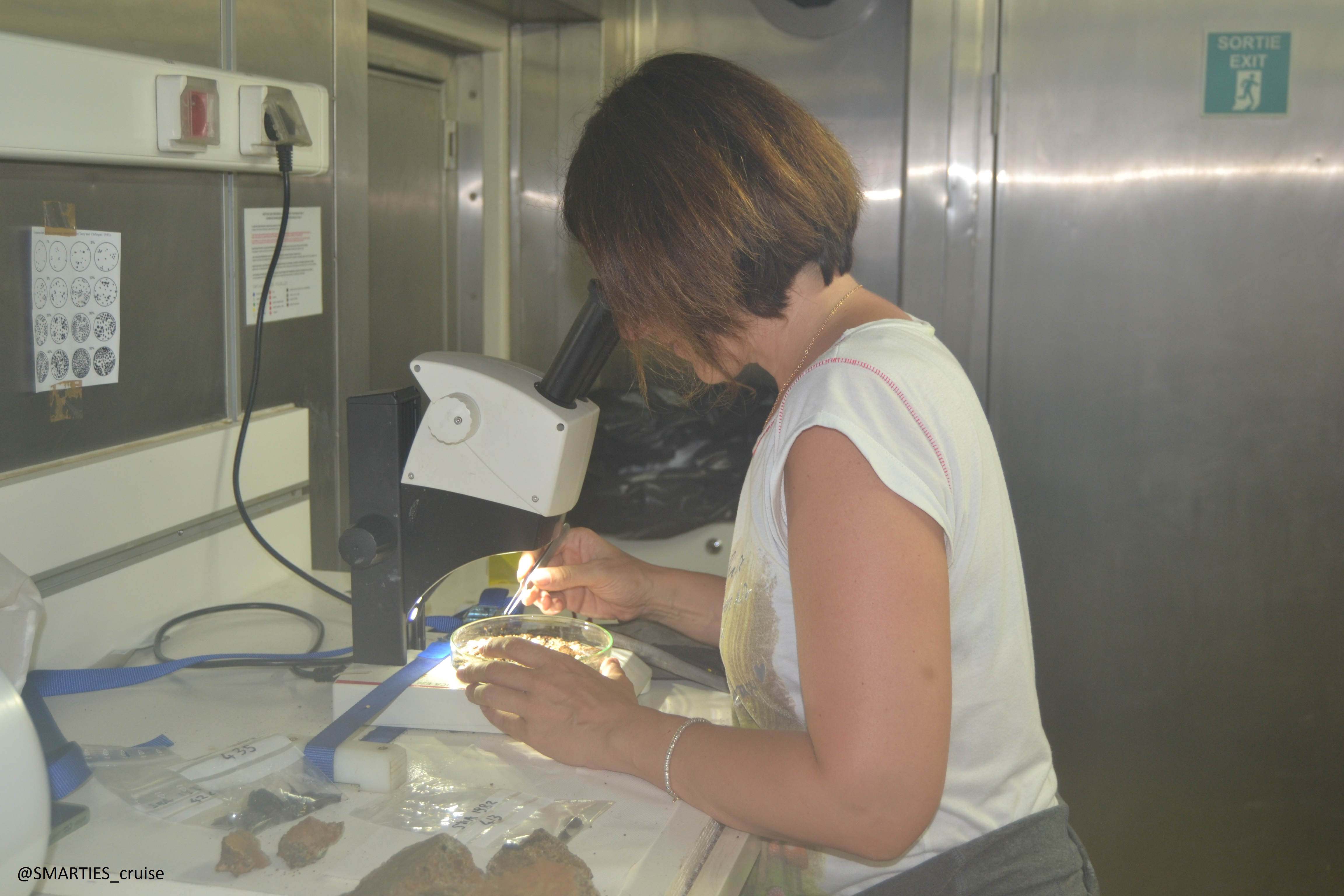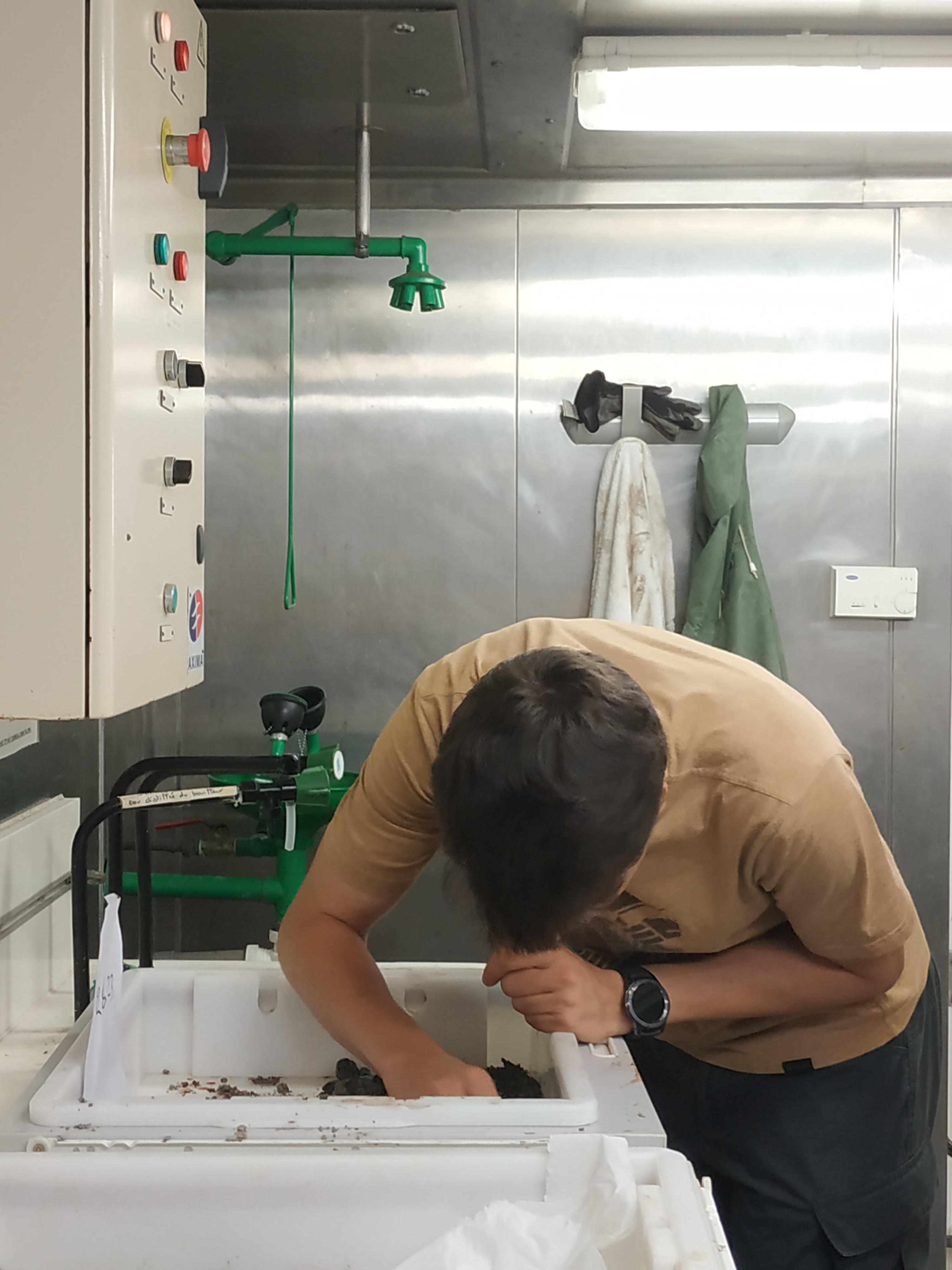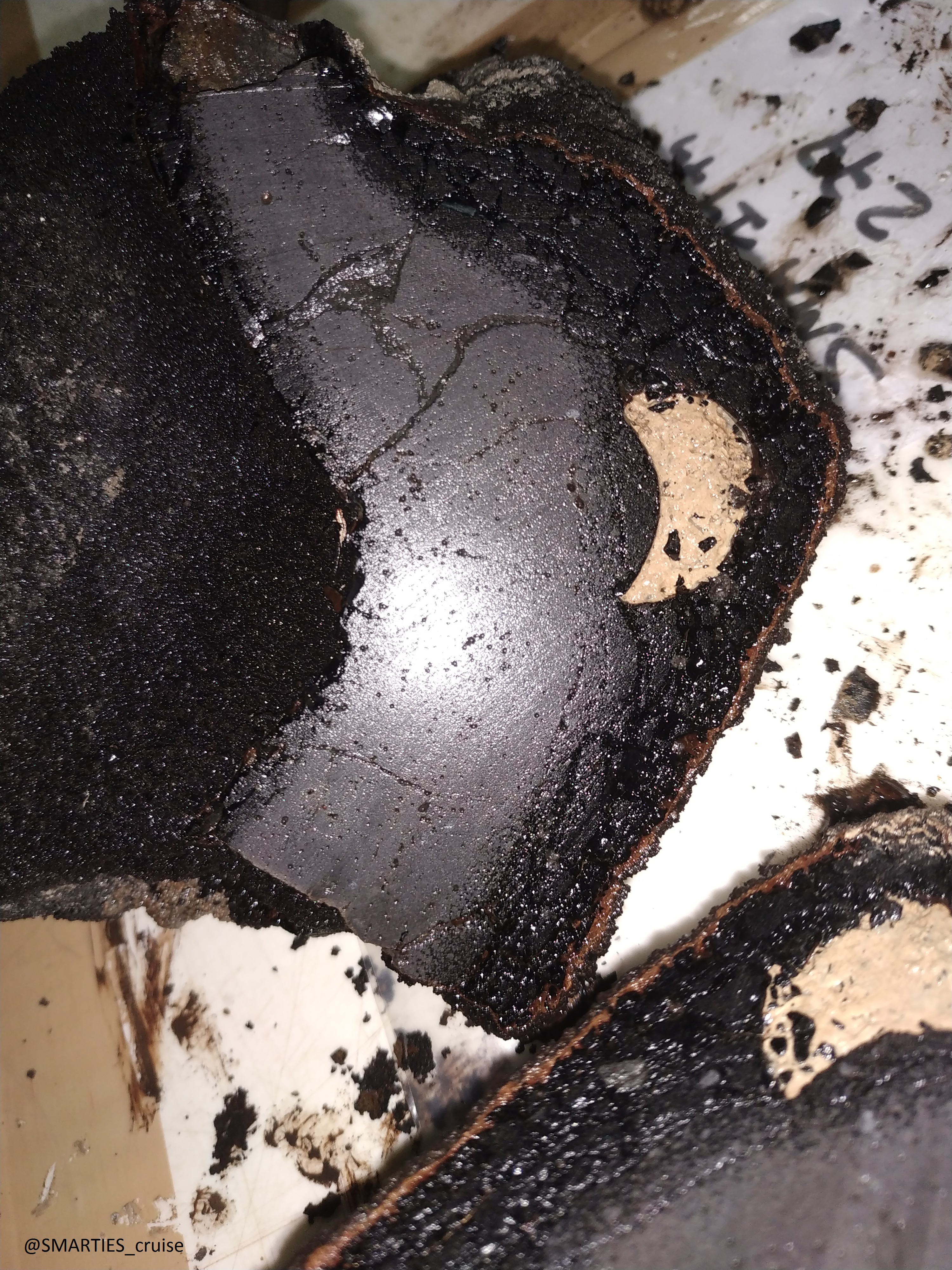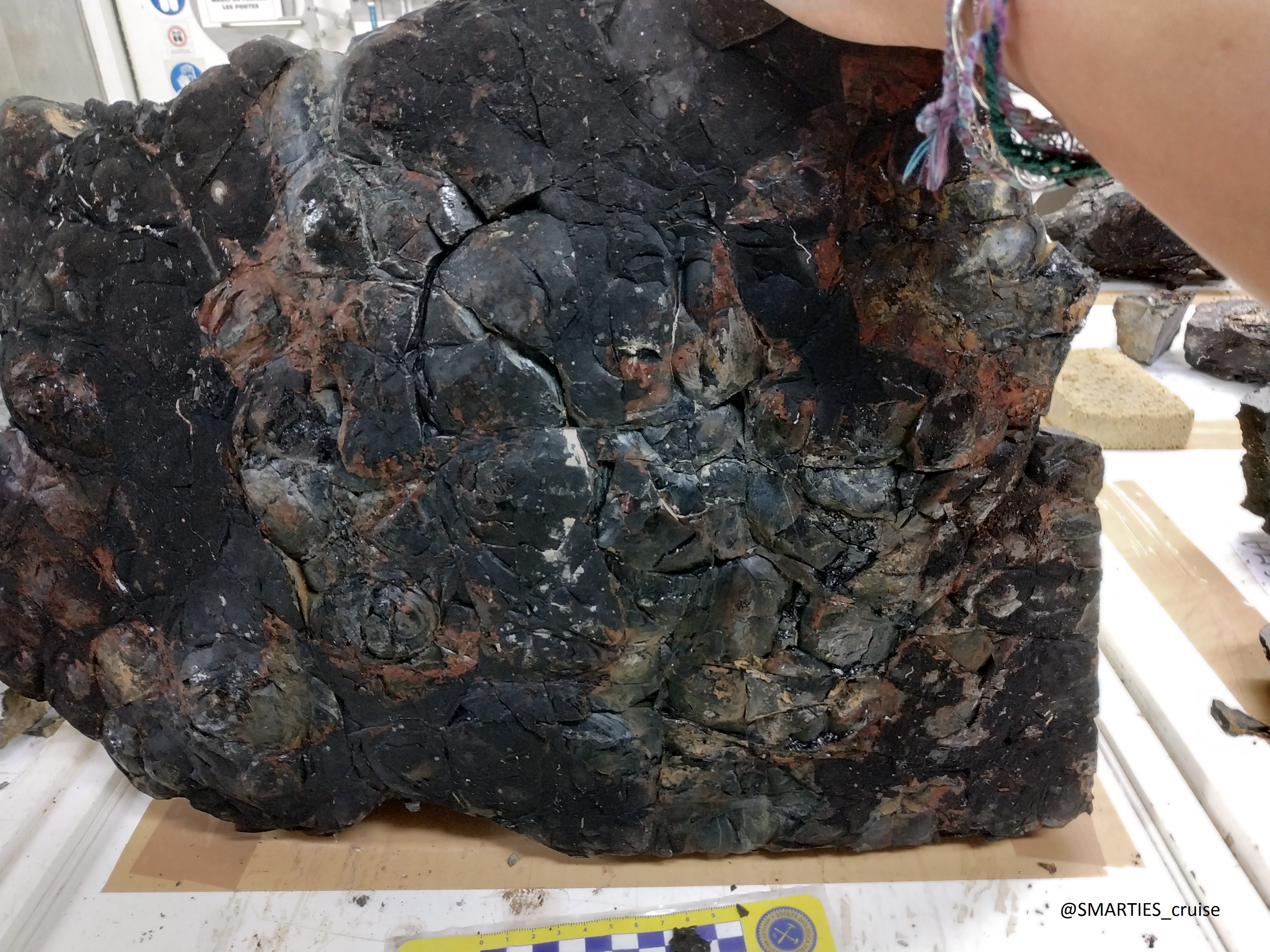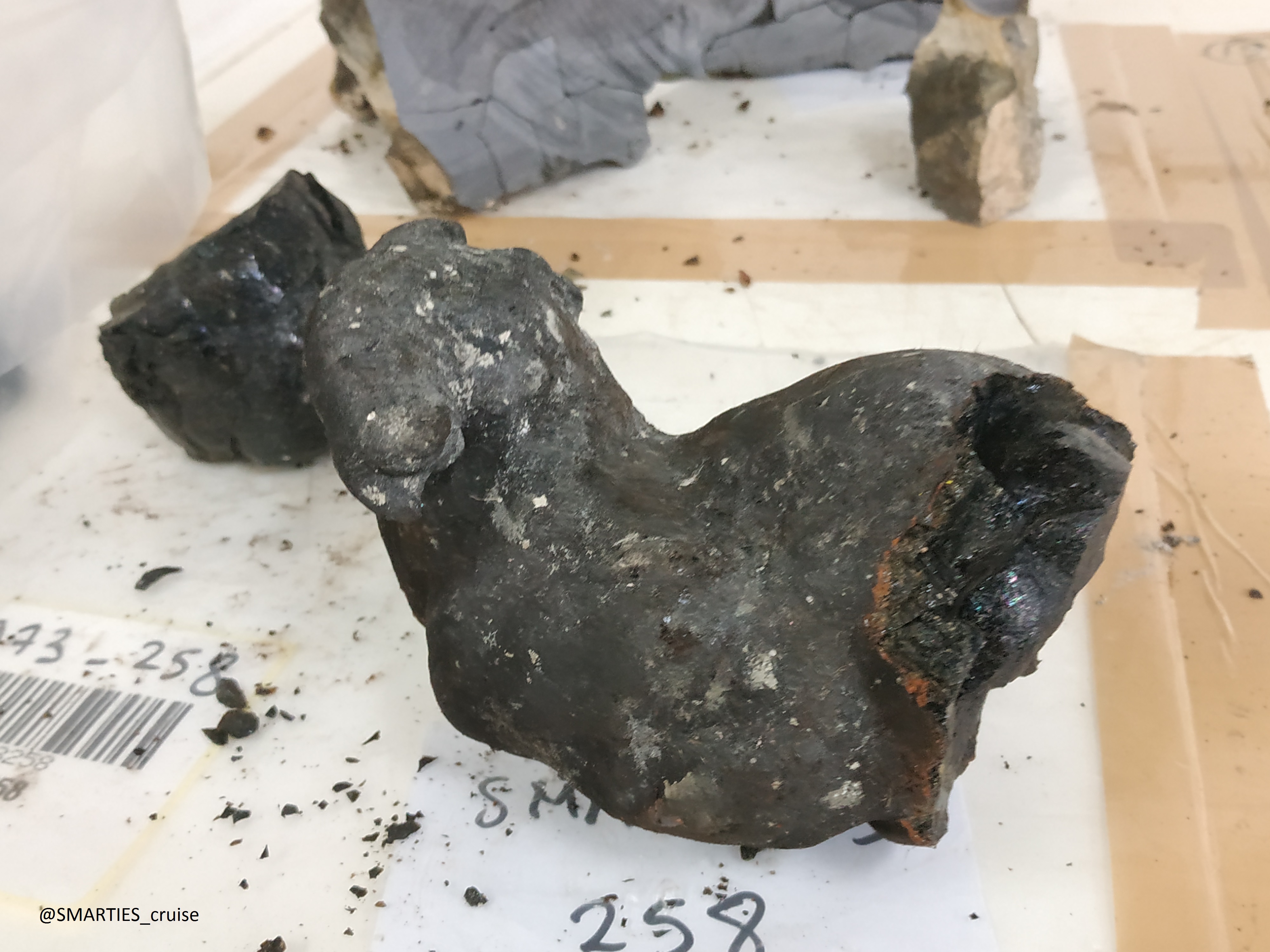For several days, the dives have been taking place directly on the axis of the Mid-Atlantic Ridge, which means the presence of solidified magma. These rocks are visible in different forms: pillow lava with sometimes lava fingers, lobate lava crust, etc. When magma rises to the surface, it cools very quickly due to the temperature difference between magma and seawater. This very fast cooling allows the formation of basaltic glass on the surface. These glasses are very useful to study the primary composition of the magmatic liquid.
After each dive with basalts, we recovered the glass from the samples. With Anna and Bérengère, we put on our equipment (glasses, security shoes, hammer, gloves etc.) to start this dangerous work. Not a single piece will escape from us! We separate the fresh glass from each sample, taking care not to mix them. Indeed, in light of the small-scale chemical heterogeneity of the mantle in this area, samples should not be contaminated by mixing the glasses. On this dangerous war against the sample, sometimes the glasses win and cut a few fingers.
All glasses will be analysed by us in Modena to determine the concentrations of major elements, trace elements and isotopic ratios of strontium, neodymium, lead and hafnium. This will allow us to identify the source of these magmas. Bérengère will be in charge to measure tungsten isotopes to understand the primary mantle heterogeneities.




